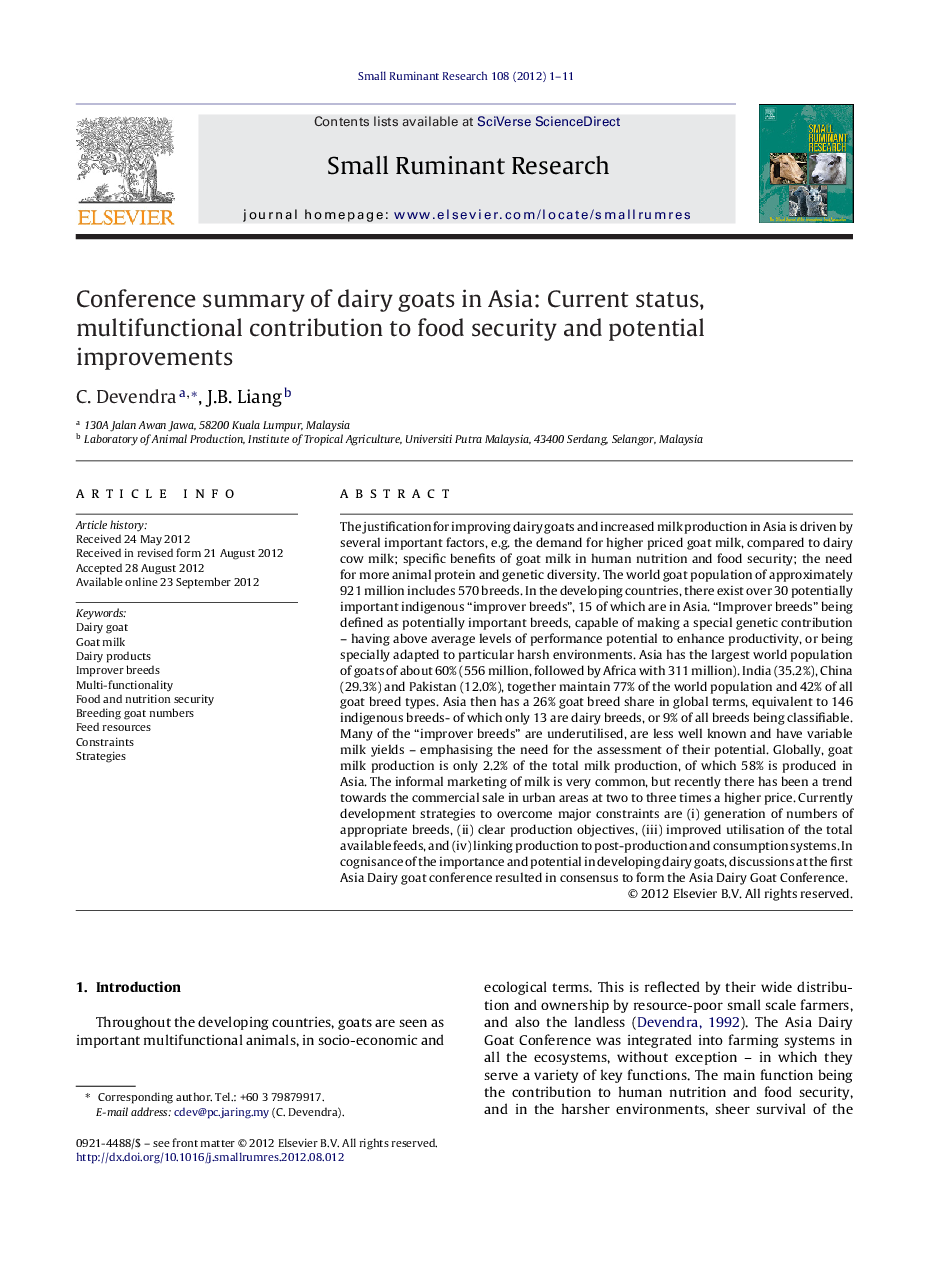| Article ID | Journal | Published Year | Pages | File Type |
|---|---|---|---|---|
| 5796226 | Small Ruminant Research | 2012 | 11 Pages |
The justification for improving dairy goats and increased milk production in Asia is driven by several important factors, e.g. the demand for higher priced goat milk, compared to dairy cow milk; specific benefits of goat milk in human nutrition and food security; the need for more animal protein and genetic diversity. The world goat population of approximately 921 million includes 570 breeds. In the developing countries, there exist over 30 potentially important indigenous “improver breeds”, 15 of which are in Asia. “Improver breeds” being defined as potentially important breeds, capable of making a special genetic contribution - having above average levels of performance potential to enhance productivity, or being specially adapted to particular harsh environments. Asia has the largest world population of goats of about 60% (556 million, followed by Africa with 311 million). India (35.2%), China (29.3%) and Pakistan (12.0%), together maintain 77% of the world population and 42% of all goat breed types. Asia then has a 26% goat breed share in global terms, equivalent to 146 indigenous breeds- of which only 13 are dairy breeds, or 9% of all breeds being classifiable. Many of the “improver breeds” are underutilised, are less well known and have variable milk yields - emphasising the need for the assessment of their potential. Globally, goat milk production is only 2.2% of the total milk production, of which 58% is produced in Asia. The informal marketing of milk is very common, but recently there has been a trend towards the commercial sale in urban areas at two to three times a higher price. Currently development strategies to overcome major constraints are (i) generation of numbers of appropriate breeds, (ii) clear production objectives, (iii) improved utilisation of the total available feeds, and (iv) linking production to post-production and consumption systems. In cognisance of the importance and potential in developing dairy goats, discussions at the first Asia Dairy goat conference resulted in consensus to form the Asia Dairy Goat Conference.
